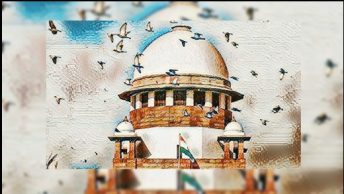(Prof. Farzana Haniffa’s review is the third post in our blog’s round-table book discussion on Prof. Jeff Redding’s A Secular Need: Islamic Law and State Governance in Contemporary India moderated by Prof. Rohit De. The introductory post and links for other responses can be found here.)
Redding’s book lays out the manner in which regardless of the horrendous anti-Muslim violence permitted and often perpetrated by the Indian secular state court system, the secular state courts in turn need the Islamic non-state in both material and ideological ways. This curiously interdependent relationship between the secular state and the Islamic non-state in the sphere of dispute resolution is framed by Redding as constituted by “absorptive love,” “otherising hate” and “needful dependency”. The primary trope of “need” is then described as the Islamic non-state easing the burden of the secular civil and criminal court system by reducing the volume of cases they are compelled to hear, and by providing access to divorce for Muslim women when the secular court system has been notoriously reluctant to grant divorces to anyone. The Islamic non-state Dar Ul Quaza system is also described as being a more legitimate and community friendly justice alternative to the assumption of distance and authority by the secular state courts. Redding argues that the Dar Ul Quaza system has greater popular legitimacy due to its informality and is preferred by Muslims and even some Hindus over the “difficulties” of the more formal state court processes. Redding’s analysis reminds us about the importance of the trope of “hate” as well. The petition that was brought against the Dar Ul Quaza network by the lawyer Madan in 2005 argued that the Islamic courts undermine “liberal constitutional values such as secularism and the rule of law.” The Supreme Court’s decision regarding the case both endorses sentiments of “liberal hate” that forms the basis of the case, and recognizes the role played by such courts in legitimate dispute resolution. The conjoined prevalence of “absorptive love” of the secular state towards Muslims as well as the “otherising hate” is constitutive, according to Redding, of its “needful dependency” on the Islamic non-state.
The discussion of the history and contemporary relevance of the Dar Ul Quaza network is a useful contribution. The book sparked many reflections regarding the Sri Lankan context which shares some superficial similarities with India. However, the vastly different relationship between the groups and the dissimilar histories of the respective court systems leave little room for direct comparisons.
Currently, Sri Lanka is experiencing the popularity of anti-Muslim hate. While unlike India where the legacy of Mughal rule, the history of partition and relations with Pakistan impact Hindu Muslim relations, the othering of Muslims in Sri Lanka with the kind of virulence experienced in the last ten years is relatively new in its post-colonial history. The nation state form’s requisite intimate “other” was for a long time the Tamil; at the conclusion of the war in 2009, however, a variety of groups focused on the sustained othering of Muslims against whom there have already been several incidents of mob violence. Today, anti-Muslim sentiment is widespread, and incitement of Muslim hate is a go-to strategy at election time. The bombings of churches and tourist hotels by local ISIS sympathizers on Easter Sunday 2019, transformed the rhetoric of the anti-Muslim movement into a principle of policy. One of the elements that has been utilized for the propagation of anti-Muslim sentiment has been the Muslim marriage and divorce act (MMDA).
The MMDA, not reformed since 1950s, has egregious provisions: only men can be quazis, there is no specified age of marriage, and polygamy is permitted without reservations. At least two generations of Muslim feminists have struggled to have the state reform the MMDA to no avail. Today, however the MMDA is part of a national conversation about overturning “special” privileges that Muslims have in the country. The problem of early marriage—widespread among vulnerable populations across the country— is currently articulated as a Muslim issue. Today, Muslim women activists are locking horns also with a male Muslim religious establishment committed to blocking reform. Under the current regime, the activism around the MMDA cannot be divorced from attempts by the anti-Muslim movement to instrumentalize the issue for the marginalization of Muslims. Here is where much of the similarity with the Indian context must be located and also where any claim to similarity must end.
For Sri Lanka, first and foremost, the term secularism has little or no meaning other than as a somewhat distant normative standard for state practice. Successive governments have successfully mobilized a nativist Sinhala Buddhist nationalism to minorities all “others” and repel “western influences”. The recognition of a “foremost place” for Buddhism in the country’s first autochthonous republican constitution of 1972 successfully laid to rest any claim to a constitutional commitment to secularism. Therefore the normative notion that “secularism” must inform governance practices of a modern state is regarded with some ambivalence in Sri Lanka. Today the current regime actively cultivates its base using Sinhala Buddhist supremacist language and signage and conversations about secularism have become largely irrelevant.
There is also no widespread formal recognition or acceptance of non-state dispute resolution mechanisms run by religious groups. The precursor to the MMDA act of 1955 was drafted after 1925 precisely as part of the colonial state’s refusal to accommodate such mechanisms. Currently such mechanisms exist among the country’s Muslim population at an informal level and are run by particular reformist oriented mosque committees in villages and are separate from the Quazi courts. The few documented cases of mosques attempting such dispute resolution have been critiqued for their policing of sexual transgressions by framing them as infractions against community standards. In one case in the town of Kattankudi, the Human Rights Commission of Sri Lanka attempted to intervene in a manner that “respected” Muslims’ cultural sensibilities. However, this “respect” for cultural sensibilities by an institution of the state was ad hoc and not sustained and resulted mainly in validating the basis upon which the male mosque committee members acted. The work of these institutions was critiqued as “extra-legal” and anti-women and as indicative of the state’s validation of some of the most egregious acts of reformist groups (Haniffa).
The Sri Lankan state has no pretensions whatsoever to being liberal with regards to Sri Lankan women. The overwhelmingly male parliaments (less than 5% female representation since independence) have rarely demonstrated that they have had the interests of Sri Lanka’s women in mind when drafting legislation. The criminalization of marital rape, and the instituting of a domestic violence act were done after significant struggle. And as stated above, the MMDA has defied reform despite several attempts at organized lobbying. Any regard that legislators have for women is framed only in the most conservative and dated tropes of motherhood and care giving. The Indian state’s shifting of cases of violence against women to the criminal court system in the interest of efficiency is a powerful indication of the recognition of women’s rights by the secular Indian state—after much work by activists—and speaks to the work still to be done in Sri Lanka.
The discussion of the legitimacy problem of the secular courts in India that is shored up by the Dar Ul Quaza system was the most interesting chapter in the book and served as a necessary reminder of how legitimacy can be conceptualized in the context of administering justice. The timely restating of the critique of formalized justice processes and presenting the Dar Ul Quaza network as having greater appeal is a reminder to us in Sri Lanka of the continued appeal of the MMDA and the Quazi courts. In Sri Lanka the longstanding popular appeal of a Quazi court system that is only tenuously connected to the state system but is considered legitimate on the basis of its compliance with the Shariat has stumped feminist activists. The system is riven with corruption and rarely supports women’s requirements and few if any faskh divorces are entertained. However, the community appeal of such a system and the manner in which despite its many failings it provides an alternative mode of dispute resolution and is free of some of the constraints of more formal processes must be appreciated. For instance, the cost-effective nature of the Dar Ul Quaza process for Muslim women seeking divorce is mentioned in the case that Redding uses and the absence of a role for lawyers in the current Quazi courts is something that local activists in Sri Lanka are also interested in maintaining.
While the book presented the existence and acceptance of the Islamic non-state in the context of violent anti-Muslim sentiment and action, as a non specialist it was difficult to gauge what this meant for the future of Muslims in the country. Other writings speak to the steady deterioration of the status of Muslims through the ghettoization of Muslim communities, the lack of a recognition of the need for reservations, and the increasing violence and the introduction of new laws through which to further marginalize Muslims. The presentation of the Islamic non-state as necessary for the existence of the secular state was suggestive of many possible readings regarding the future. If more was said about what this “secular need” might ultimately mean for the Muslims in India the specificity of this particular historical moment in the politics of the Indian secular state may have been clearer. The question as to whether the idea of the secular state itself was historically contingent seems to haunt the book and a little more on that would have been useful.
The book made a very interesting argument about the Indian secular state and the Islamic non state and sparked useful reflections regarding the Sri Lankan context. It should be read by any scholar interested in the law in contemporary India, non-state dispute resolution mechanisms as well as the ongoing conversation regarding Indian secularism.





